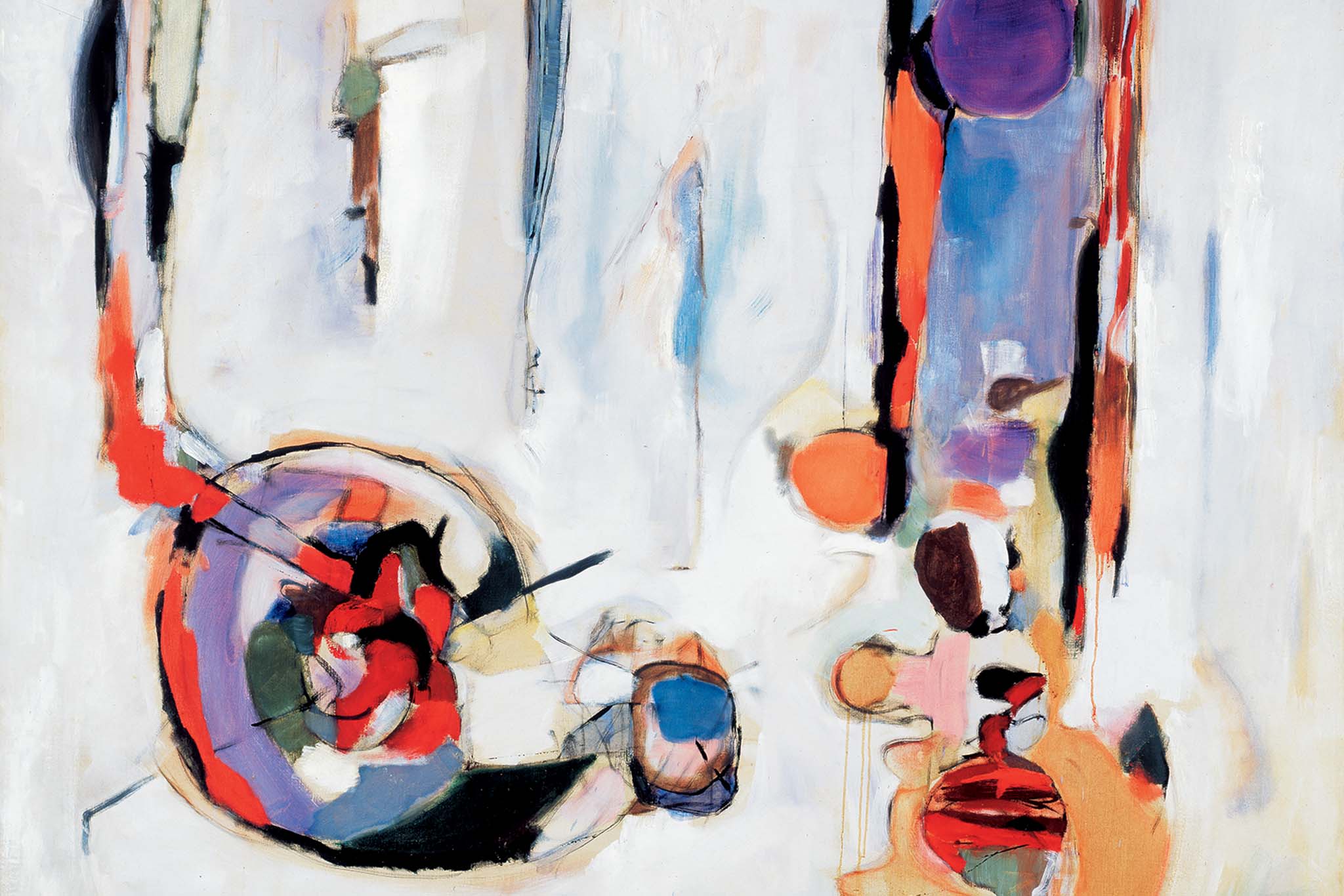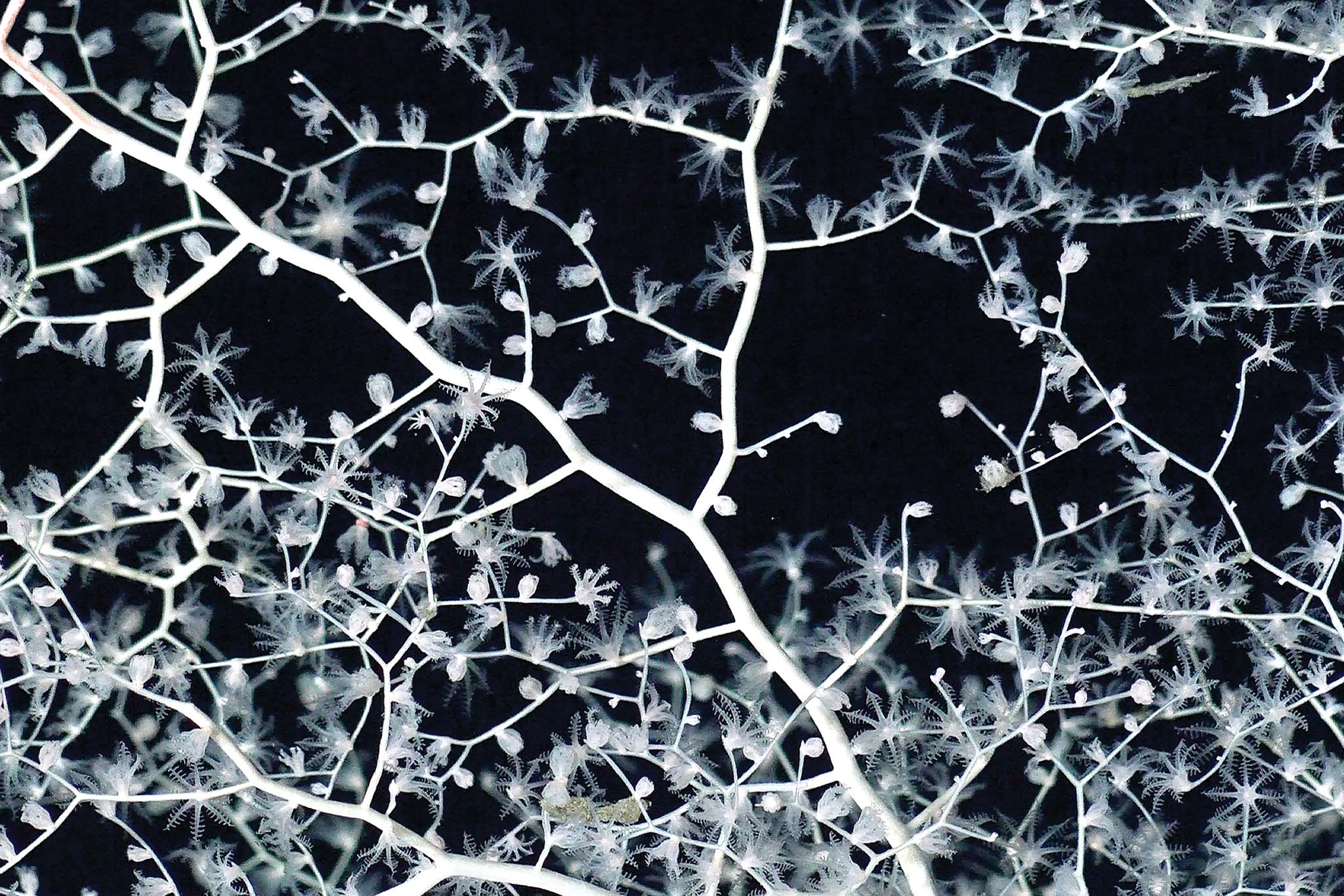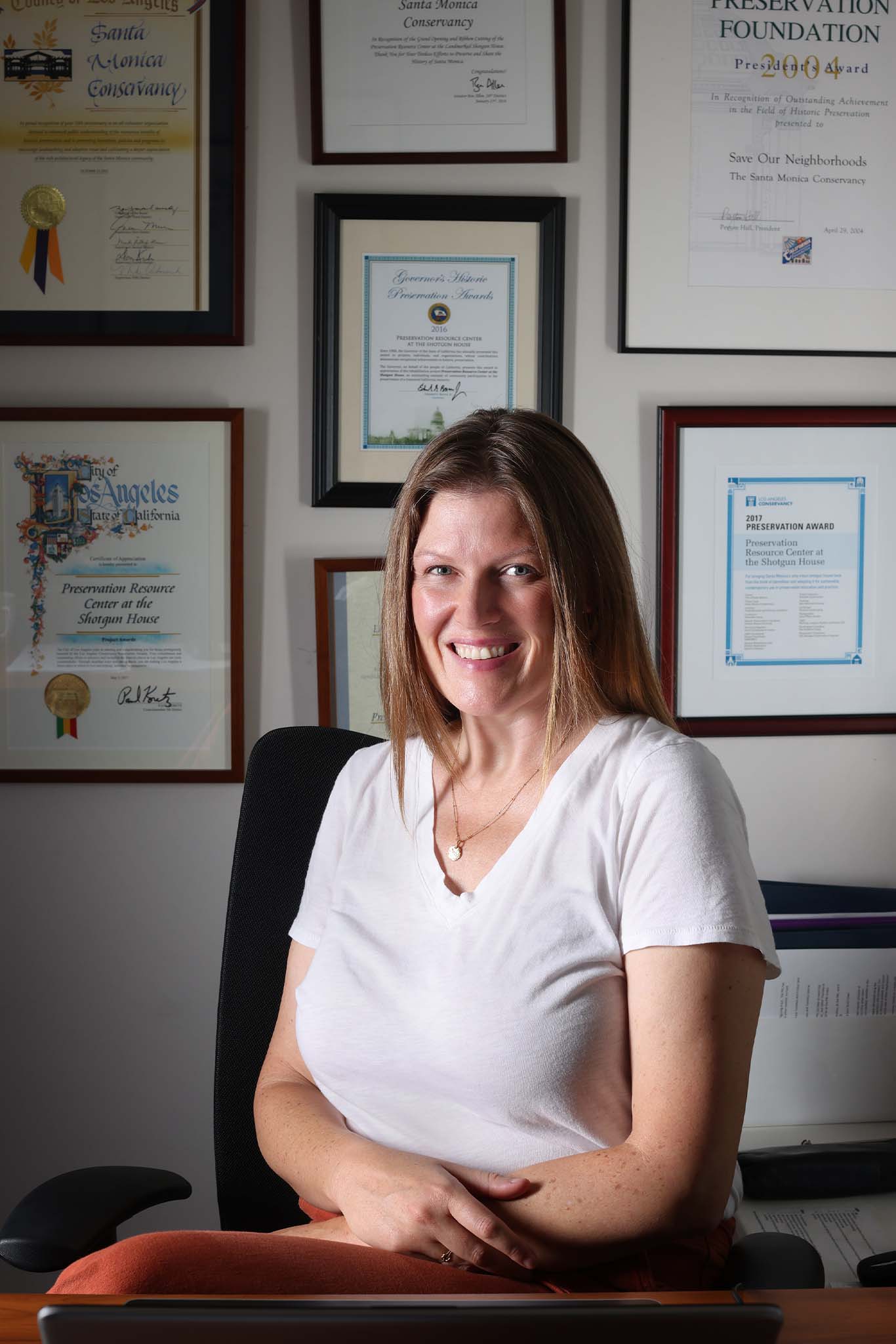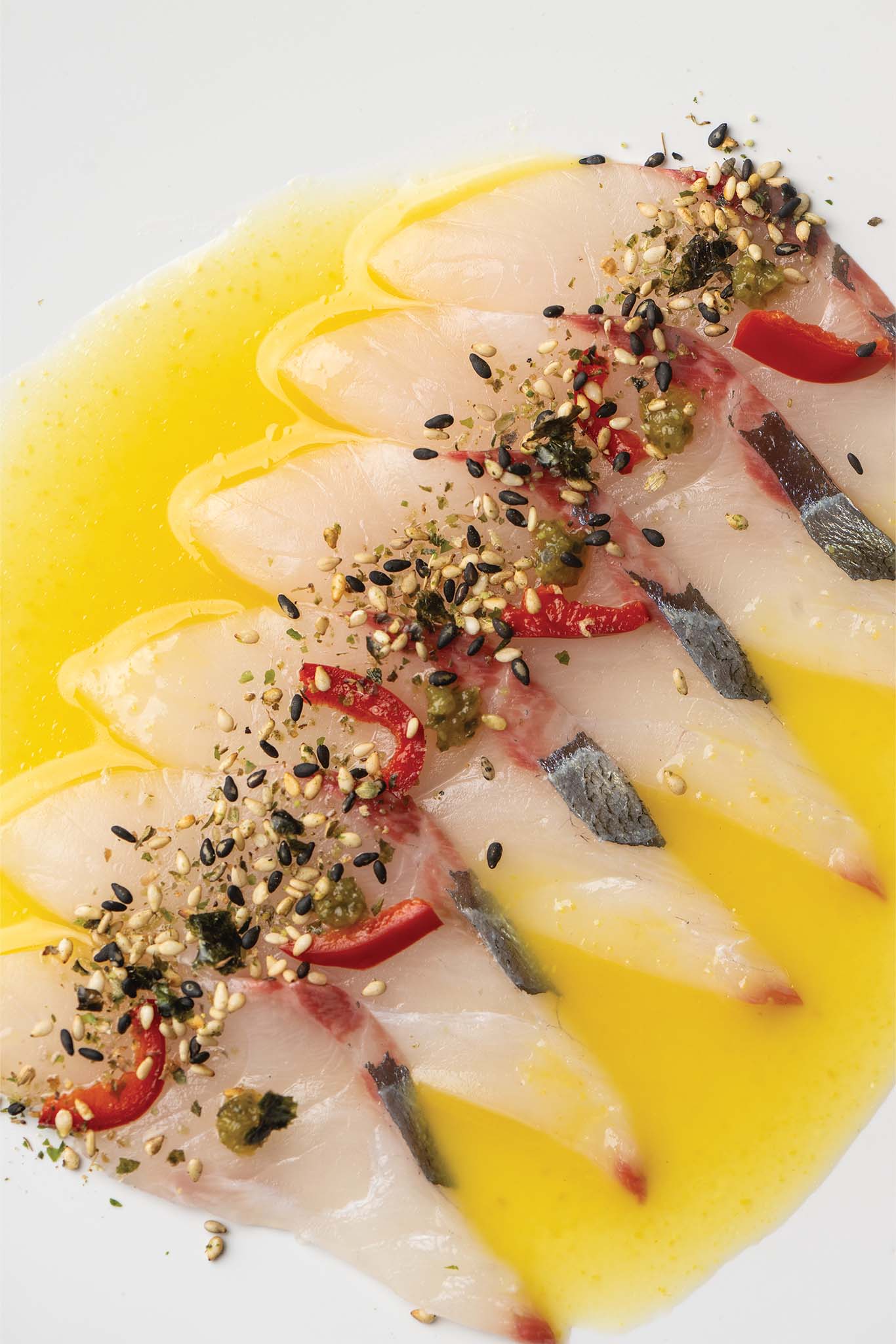By Urs Baur
Images by Tim Aukshunas
On the occasion of the 100th anniversary of the birth of renowned California artist Sam Francis, it’s worth exploring how the environment and cultural scene of the City of Santa Monica influenced the artist’s work and vice versa.
Born Samuel Lewis Francis on June 25th, 1923, in San Mateo, California, Francis would remember frequent visits to Santa Monica, initially with his family and later as a young man. Drawn to the mild climate and vivid light of this coastal city, the artist would maintain several studios in the area over the course of his lifetime.
Some of the key locations included a studio at what would become his main California residence on West Channel Road, previously a garage where Charlie Chaplin had kept his collection of fire engines; a former sailmaker’s loft on the corner of Main Street and Ashland; a large studio at 1664 20th Street; and for a period of time in the 1980s and 1990s, two large industrial spaces on Broadway. Additionally, he shared a 16,000 square foot space in Venice with his artist friends Laddie John Dill, Joe Goode, and Ed Ruscha.
Sam was really the first internationally famous California-born artist...
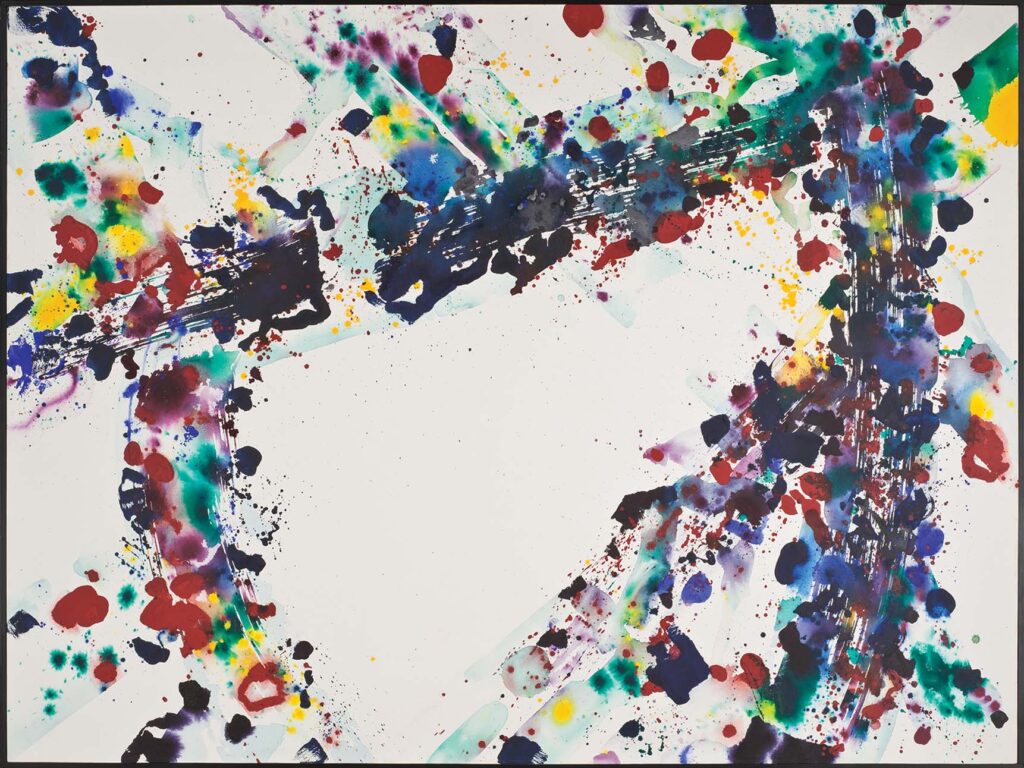
Sam Francis, I Am an Arbor for her Thoughts, 1973, Los Angeles County Museum of Art, gift of Marcella Scott Krisel, © 2023 Sam Francis Foundation, California/Artists Rights Society (ARS), New York, photo © Museum Associates/LACMA
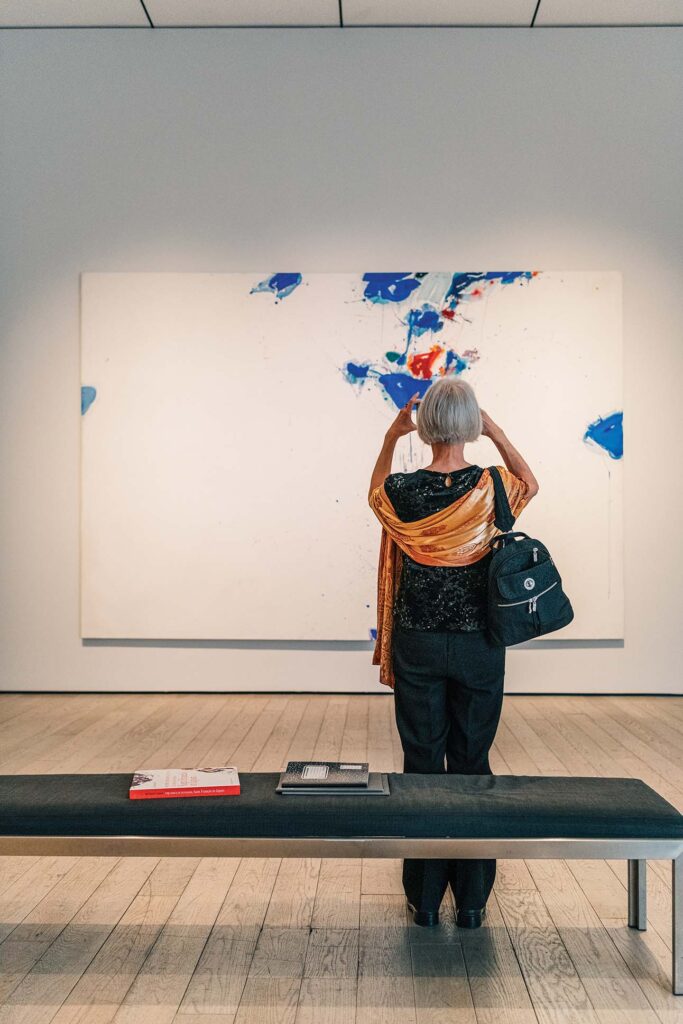
Collaborations and artistic dialogue with his contemporaries were a key element in his process and are currently the focus of a major exhibition at the Los Angeles County Museum of Art (LACMA), Sam Francis and Japan: Emptiness Overflowing.
“This is the first time Francis’ work has been exhibited directly in this context, here in a Los Angeles museum,” says Debra Burchett-Lere, Executive Director of the Sam Francis Foundation. “Showing the work alongside work of his Japanese contemporaries allows the viewer to draw clear connections and witness the profound ways in which those artists influenced each other. There have been a few exhibitions in that spirit, but never the way it’s been done here, with the artwork displayed side by side and within the same galleries.”
Francis’ life and work are a testament to his commitment to artistic collaborations, creative exchanges, and the cultivation of an intellectually invigorating social circle. His home in Santa Monica was open to friends and fellow artists, who dropped in unannounced constantly, according to accounts by his surviving family. The West Channel home was also where he painted his last series of paintings, in 1994, just before his death.
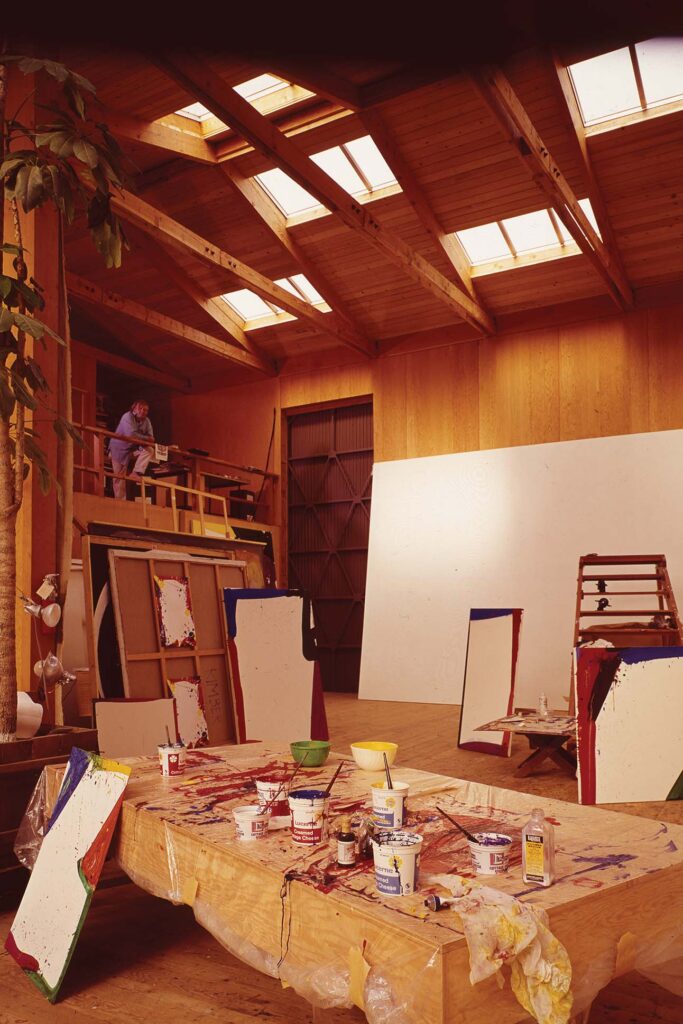
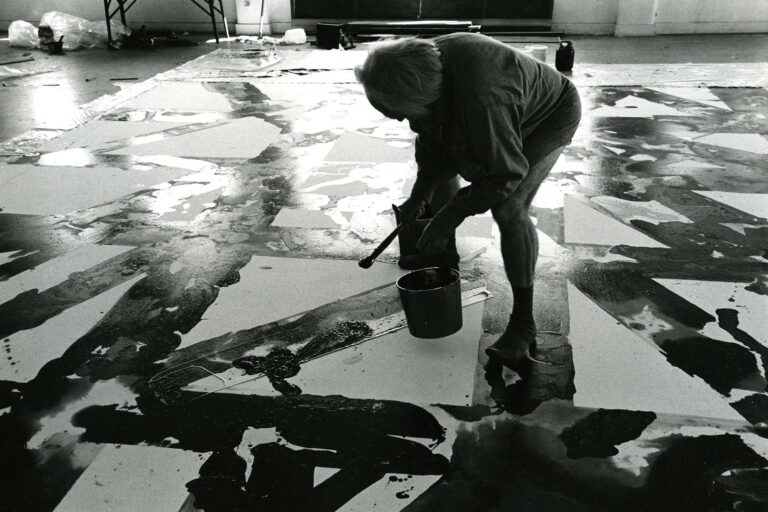
Above: Sam Francis in West Channel Road studio, Santa Monica, ca. 1965; photographer unknown. Sam Francis working in his Ashland studio, Santa Monica, 1977. Photo by Meibao D. Nee.
“Sam was really the first internationally famous California-born artist,” says Burchett-Lere. He was a truly global artist, and first came to fame in Paris. Besides his home base, he worked and maintained studios in the French capital, New York, Mexico City, and Japan. “He traveled back and forth a lot. He loved Santa Monica. Having the show here in Southern California is meaningful because of a particular cultural affinity we have with the Pacific Rim countries,” she says.
Emptiness Overflowing focuses on his time in Japan and delves into Francis’s affinity for Japanese art and its influence on his oeuvre. Curators Hollis Goodall, Leslie Jones, and Richard Speer have skillfully juxtaposed the artist’s work with historic and contemporary Japanese art, highlighting the visual and philosophical connections between them. The groundbreaking exhibition offers a window into Francis’s creative world while reminding us of the importance of the cultural milieu in which he thrived.
It is Burchett-Lere’s hope that the show will demonstrate the creative influences and exchanges that are essential in understanding Francis’ work. “I think the exhibit not only showcases the remarkable body of work created by the artist but offers a rare opportunity to explore the symbiotic relationship between Francis and Japanese artists, providing a deeper understanding and context of his work and the cultural exchange that took place during his lifetime,” she says. “And in reverse, I hope it makes people appreciate Asian art in a different way, and be able to see how art rarely exists in a bubble, but that it’s a dynamic process transcending borders and spanning continents.”
The fact that the exhibition coincides with the 100th anniversary of Francis’s birthday is due more to unforeseen delays than intentional planning—a fortuitous byproduct of bigger forces at work. “It’s the icing on the cake,” says Burchett-Lere.
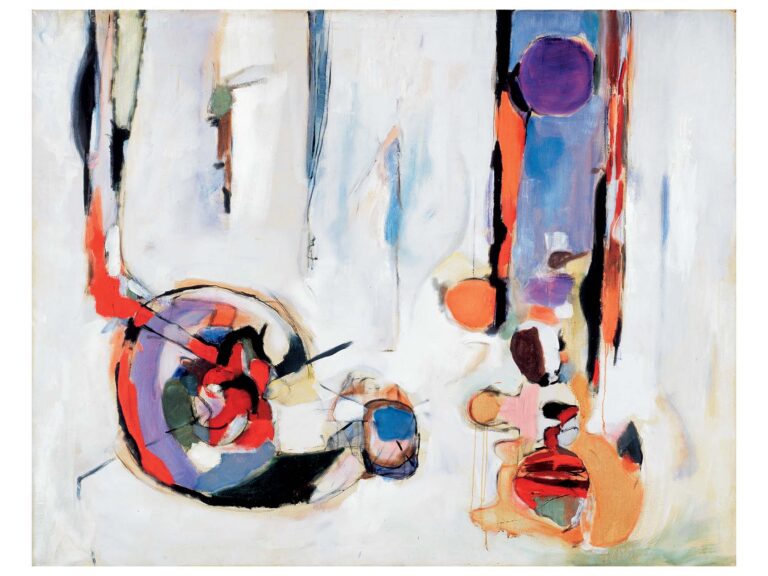
Sam Francis, Untitled, undated (ca.1947-49), oil on canvas, Collection: Albright-Knox Art Gallery, Buffalo, New York.
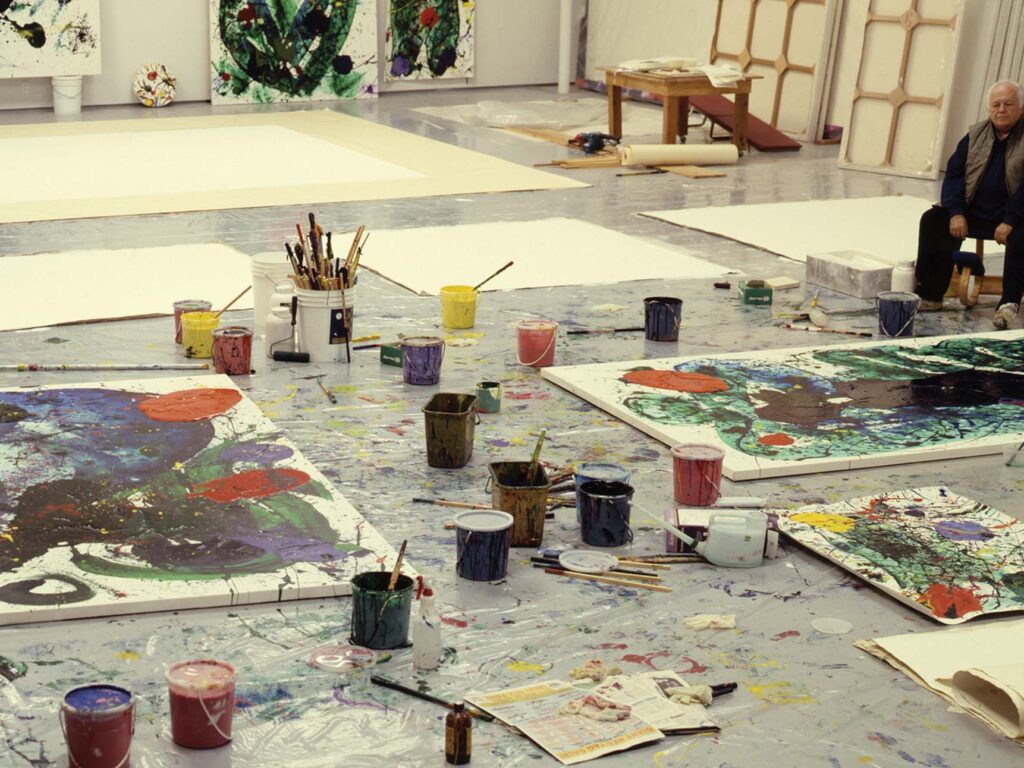
Sam Francis in his Venice, California studio, 1989. Photo by Brian Forrest.
There are several events and exhibitions planned to commemorate the 100th anniversary of Francis’ birthday—A Century of Sam, as it were—says Sam Francis Foundation Associate Director Beth Ann Whittaker. In May the Bakersfield Museum of Art will host The Circle of Sam, which will highlight artists who worked with Francis in his California studios, predominantly in Santa Monica. There is also on view an homage to Francis at the Jan Museum in Amstelveen, Netherlands, and several institutions around the world will be highlighting his work throughout the year.
In his work, as in Burchett-Lere’s favorite at the LACMA exhibit, I Am An Arbor For Her Thoughts, showgoers will be able to observe “Sam had a very facile hand,” she says. He could paint circles, and draw long straight lines, no rulers. “All very intuitive,” says Burchett-Lere.
They’ll also notice Francis’ incredible intensity of color, the vibrancy—”the cobalt blue, the cadmium red…that’s what he’s been known for.” And his ability to take acrylic paint and make it look like watercolor. “That was quite unique,” she says. “He always had a sense that paint is alive. It quivers.”
Sam Francis and Japan: Emptiness Overflowing, is at LACMA from April 9 to July 16, 2023.
For more info visit samfrancisfoundation.org and lacma.org.






